Half of the museums planning to publish their collection online in 2016 have done it…… Did the other half give up?
Vernon Systems asked New Zealand and Australian Museums how they share their collections online. This survey from 2017 was a follow up to the survey results from 2016. This year we had 73 organisations respond, from a possible 500 that were sent the survey. The museums that did respond were mostly Social History collections and there are fewer Fine Art collections this year than in 2016.
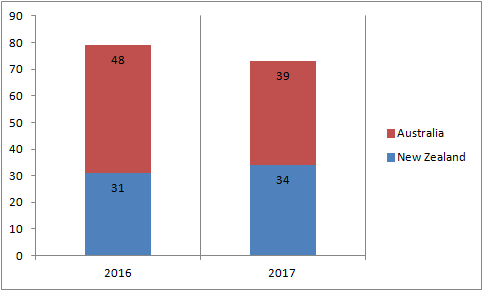
The size of the collections is similar in 2017 as in 2016. If anything, there are fewer museums in the survey with collections less than 1000 objects. This is unfortunate because smaller museums represent a large proportion of museums.
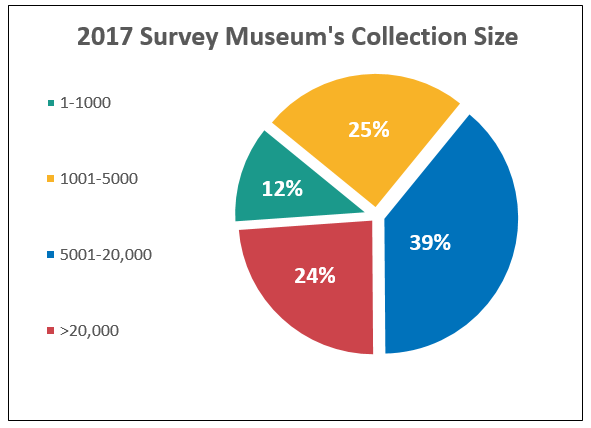
How do you record collection data?
Respondents were able choose one or more options. Most institutions chose more than one option, the most common being a Commercial CMS and a Paper based system. This is likely to be a combination of a register/accession book and the more detailed database.
There has been a notable drop in the use of Filemaker Pro. This 7% drop may be a product of museums moving away from bespoke databases in favour of more standardised options. But it is worth noting the 5% decrease in small museums completing this survey which may exaggerate this drop.
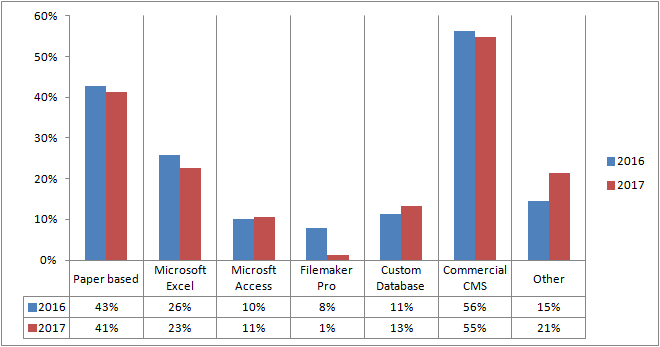
How do you share collection data?
There is a noticeable change in the number of museums planning to publish their collection online.
More museums have succeeded in publishing their collections online, or are not planning to publish collections online anymore.
In 2016, 40% of museums surveyed were planning to publish their collections online. Now, only 24% are planning to publish online.
8% of museums are no longer in the planning stages, but have successfully published their collections.
A 9% rise in museums not sharing their collection could indicate that some museums have found the barriers to publishing their collection too high or costly.
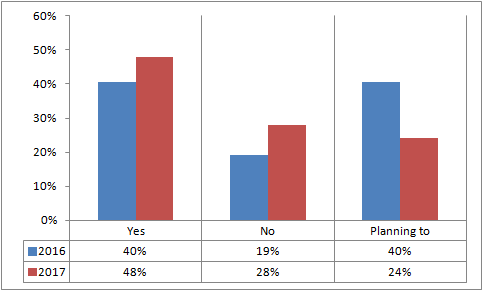
How much of your collection records do you share publicly?
There appears to be a small increase in the percentage of collections being shared online. As museums improve their digital records and become more open about sharing their collections, both the quality and quantity of data will increase.
The 5% increase in the response “A large proportion (more that 20%, but not all records)” may be the beginning of this trend.
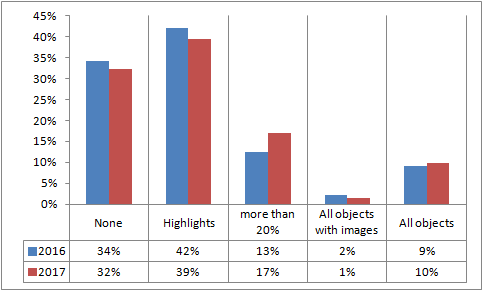
How do you allow access to your collection data?
The first five questions above were carried over from the 2016 survey, and we have also added two new questions. The first of these new questions; “How do you allow access to your collection data?” is to find out more about how the museum collection is shared online.
Respondents could choose one or more answers. The most popular way to allow access to collections is via a public website with 53% of respondents. This is followed by 3rd party websites such as Digital NZ and Trove.
An interesting group of responses can be found in the ‘Other’ category. About 70% of these responses were manual methods of sharing collection data. Often onsite they describe requests for information that are carried out by a staff member.
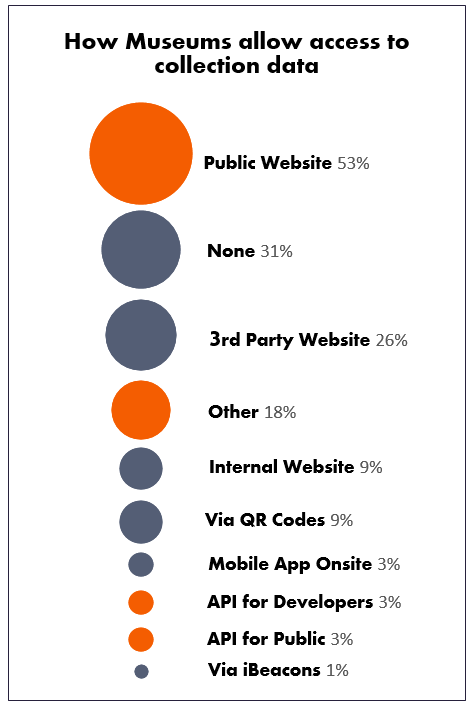
Upon closer examination, these museums are sharing this information privately, as they are not publishing their collection online. In the previous question, 52% of museums answered “No” or are “planning” to sharing their collection online. Here, 31% of respondents indicated that they do not allow access to their collections. The 21% difference indicates that museums are allowing access to their collections through direct requests.
Do you have a dedicated staff to manages your online collection?
Museums have a range of specialist roles, and we were interested to see if this would apply to online collections. 73% of the museums in the survey do not have dedicated staff to manage the online collections. This means that the maintenance is given to staff who likely already have a full job description.
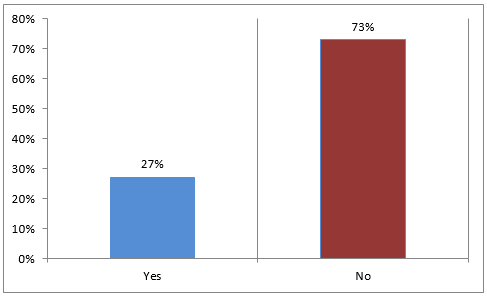
Conclusion
More museums have published their collections online in 2017 than in 2016. Overall, the 5% more museums published over 20% of their collection online. In contrast, a significant number of museums (around 15%) have found the barriers to publishing their collection online too hard and are not publishing online and are no longer planning to. Public websites are the most popular way for organisations to share their collection but many still rely on staff to share their knowledge to visitors and researchers. Despite the popularity of publishing collections online, most staff are managing online collections in addition to their normal duties. Around 73% of the organisations we surveyed do not have a dedicated team for online collections. This may change in future as more enquiries and visitors use online collections to interact with the museums and galleries.